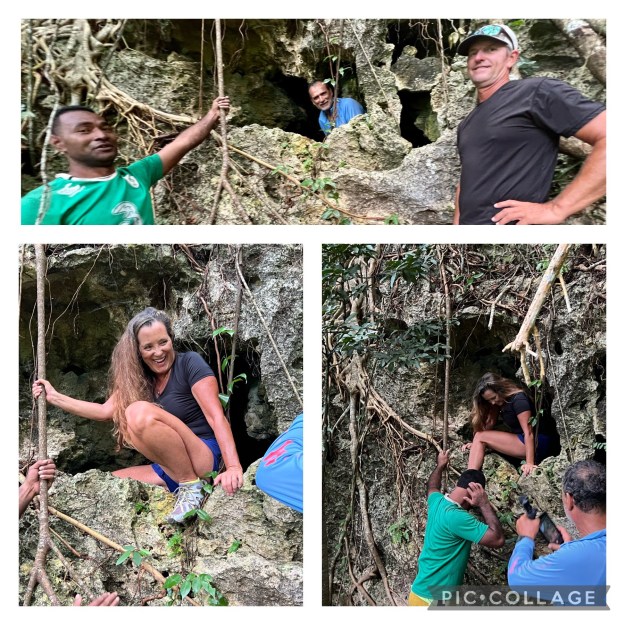Oh no! The weather was being shifty making it hard to find a safe anchorage. So, we, along with our friends on Wainani and Geniet Lewe, decided to find a more protected spot. We decided to move to Qamea Island with the hopes of meeting the Mitchell Family.
Meeting the Fijian Mitchell Family
You will find the legendary Mitchell Family nestled in the pristine bay of Namata on the island of Qamea. The Mitchell Family is famously welcoming to visitors and cruisers. And we just had to meet our Fijian counterparts.
The Mitchell family was gifted land spread out across the entire island of Qamea. The Mitchells reside on Namata Bay and several bays along the northern and eastern sides of the island.
There are 4 brothers and 3 sisters. They live with their families in a range of homes across the island. We came to meet the brothers who maintain a rich visitors guestbook.
A young 10-year old boy met us on the beach and took us to Thomas’s home. You walk up a beautiful garden and land to find the house nestled in the trees.

Namata Bay, Qamea Island
They welcome us to the island and bay. We took several photos and agreed to create pieces of art in their guest book.

Naiviivi Bay
After a fun filled experience with the Mitchell Family we decided to move to Naiviivi Bay where it was more protected from increment weather.
This bay is super calm and very protected from every wind direction except north. Lucky for us we were not expecting any northerlies. You sneak in between two markers indicating reefs on either side of the bay’s entrance.
Once inside it is calm conditions with soft breezes.

We went ashore to perform our sevusevu.
We had to figure out which chief to see and which village to visit first.
There are 5 or 6 villages in this bay.
We went ashore, asked around, and found out Chief Sepo was our guy. With our escort, we walked through a few of the villages.
We came across many children and a group of local men enjoying an afternoon tea.

Sevusevu with Chief Sepo
Passing several different styles of homes we finally come to Chief Sepo’s house.

Chief Sepo is the chief of 3 villages containing between 600-700 residents.
Wendy and Shane on Geniet Lewe provided the village with reading glasses. Of which, Chief Sepo promptly searched for a pair that would work for him.
He tried them out on the glove I was donating to the school.

The Catholic church was located across from Chief Sepo’s house.
The only school on the island has 117 children registered.
Most of these kids are boarding at the school as their homes are far away.

Continuing on to the outer edges of the village we find more homes.

Naiviivi Village
Each village has a drum that they use to start school, church, and other important events.
The grounds are blooming with a variety of flowers, some taro (potato type) and fruit trees.

After our adventure, we enjoyed a lovely dinner on Geniet Lewe.
Shane and Wendy made lamb shank, potatoes, and grilled vegies. Wainani, Jaqui and Tony made a huge salad and I brought desert.

Our blog posts run 6-8 weeks behind actual live events.
We arrived in Qamea Island in the beginning of June 2025.
Find Qamea on No Foreign Land.
We hike to the top of the ridge of a caldera in the Ringgold Isles in our last blog.

























